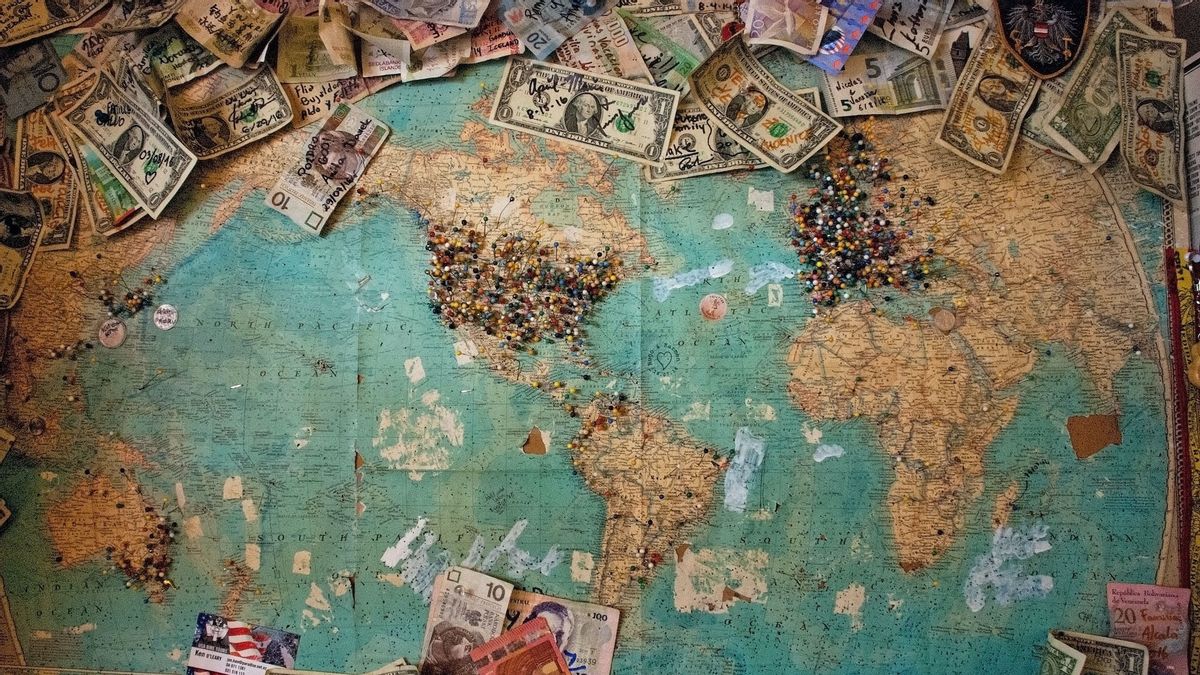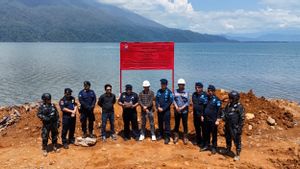YOGYAKARTA - The amount of black money leads to the origin of some illegal practices, and money laundering is one of the processes to disguise the source of the funds. And it says it's Money Laundering, then what does money launching mean?
Money laundering is an illegal process of generating large amounts of money generated by criminal activity, such as drug trafficking or terrorist financing, apparently comes from legitimate sources. Money from criminal activities is considered dirty, and the "washing" process to make it look clean.
Money laundering is a serious financial crime used by white-necked criminals and street-level criminals.
Most financial companies currently have anti-money laundering (AML) policies to detect and prevent this activity.
One common form of money laundering is called smurfing (also known as setting'). It is here that criminals break a large amount of cash into several small deposits, often spreading it to many different accounts, to avoid detection. Money laundering can also be done through the use of currency exchanges, wire transfers, and smoothers'' of cash smuggling, which smuggle large amounts of cash across borders and store them in overseas accounts, where money laundering enforcement is less stringent.
Other money laundering methods include:
Investing in commodities such as gems and gold that can be easily transferred to other jurisdictions;
By secretly investing and selling valuable assets such as real estate, cars and boats;
Struce and money laundering in casinos;
forgery; and
Using a shell company (inactive companies or corporations whose essence is only on paper).
Money laundering is essential for criminal organizations that want to use money illegally obtained. Extortion in large amounts of illegal cash is inefficient and dangerous.criminals require a way to store money in legitimate financial institutions, but they can only do so if it appears to come from a legitimate source.
The money laundering process usually involves three steps: placement, coating, and integration.
The placement secretly injects "difficult money" into the legitimate financial system.
Layering hides money sources through a series of transactions and bookkeeping tricks.
In the last step, integration, the money now laundered is withdrawn from legitimate accounts for use for whatever purpose the criminal wants.
Note that in real-life situations, this template may differ. Money laundering may not involve these three stages, or some stages can be combined or repeated several times.
There are many ways to launder money, from simple to very complicated ones. One of the most common techniques is to use a legitimate money-based business owned by criminal organizations. For example, if an organization owns a restaurant, daily cash receipts may be inflated to channel illegal cash through a restaurant and go into a restaurant bank account. After that, the funds can be withdrawn as needed. This type of business is often referred to as a "front".
Money Laundering Variant
One common form of money laundering is called smurfing (also known as setting'). It is here that criminals break a large amount of cash into several small deposits, often spreading it to many different accounts, to avoid detection. Money laundering can also be done through the use of currency exchanges, wire transfers, and smoothers'' of cash smuggling, which smuggle large amounts of cash across borders and store them in overseas accounts, where money laundering enforcement is less stringent.
Other money laundering methods include:
Investing in commodities such as gems and gold that can be easily transferred to other jurisdictions;
Secretly investing and selling valuable assets such as real estate, cars, and boats;
Struce and money laundering in casinos;
forgery; and
Using a shell company (inactive companies or corporations whose essence is only on paper).
What is Electronic Money Laundering?
The Internet has changed old crimes. The emergence of online banking institutions, anonymous online payment services, and peer-to-peer (P2P) transfers with mobile phones have made it increasingly difficult to detect illegal money transfers.
Additionally, the use of proxy servers and anonymous software makes a third component of money laundering, integration, almost impossible to detect money can be transferred or withdrawn with little or no trace of Internet protocol addresses (IPs).
Money can also be laundered through online auctions and sales, gambling sites, and virtual gaming sites, where illicit money is converted into game currency, then returns to real clean money, can be used, and can not be tracked.
The latest borders of money laundering involve cryptocurrencies, such as Bitcoin. While not completely anonymous, they are increasingly used in extortion schemes, drug trafficking, and other criminal activities due to their relative anonymity compared to more conventional forms of currency.
Why Is Money Laundering Important?
Anti-money launching (AML) seeks to eliminate criminals from profit from their illegal companies, thus eliminating the main motivation for them to engage in these evil activities.
Illegal and dangerous activities, such as drug trafficking, human smuggling, financing terrorism, smuggling, extortion, and fraud, endanger millions of people around the world and impose tremendous social and economic costs on society.
Because the results of these activities are legitimized by money laundering, fighting money laundering can reduce criminal activities and therefore provide significant benefits for the community.
So after knowing the meaning of money launching, watch other interesting news on VOI, it's time to revolutionize news!
The English, Chinese, Japanese, Arabic, and French versions are automatically generated by the AI. So there may still be inaccuracies in translating, please always see Indonesian as our main language. (system supported by DigitalSiber.id)













